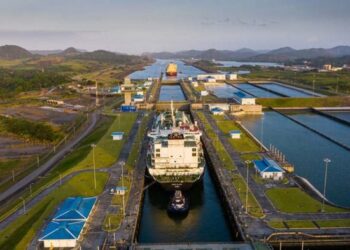On 24 July, the Panama Canal held a public hearing on the proposed modification of its toll structure, as the period for receiving inquiries from the industry concluded. The Canal approved the implementation of changes in the toll structure to be in effect from 1st January 2020.
After careful evaluation and analysis of the comments received, and once all relevant considerations are incorporated into the structure, the Board of Directors of the Panama Canal approves the proposal to be submitted to the Cabinet Council of the Republic of Panama for approval final,
…the Panama Canal said in an official statement.
The modifications were first announced on 14 June, with the purpose of increasing transparency and flexibility, as well as to ensure that the interoceanic route remains competitive.
For the container ship segment-the main user of Neopanamax Locks-the proposed toll modifications will help retain and incentivize increased cargo volumes through the Panama Canal.
Specifically, the proposal offers more attractive rates for customers who benefit from the Panama Canal Loyalty Program by adding new levels with reduced rates in the capacity charge for shipping lines deploying between 2 million to 3 million TEUs, and additional reductions for lines deploying an incremental over 3 million TEUs.
The incentive implemented in the last toll modification of fiscal year 2018 for total TEU loaded in the return voyage (TTLR) will remain in effect.
For the Vehicle Carrier and RoRo segment, the proposed modifications include-for the first time–a new tariff category or range precisely designed for Neopanamax vessels to account vessels sizes and capacity.
Additional modifications for this segment include slight increments in tolls tariffs for Panamax-sized vessels, as well as minor adjustments based on vessel size ranges.
Toll structures for tankers, chemical tankers, LPG and LNG vessels remain unchanged, but tolls adjustments are proposed to more closely align with the value of the route.
Tolls for small vessels (minimum tolls) and for the local tourism market are being revised upwards to take into account the resources used in the transit and the complexity of accommodating these vessels within the locks’ chambers. The last tariff adjustments for small vessels were implemented in 2012.
The public hearing is an essential part of the process. We value the comments we receive today from the maritime industry and we will ensure that everything is considered in the new toll structure,
…said Panama Canal Administrator Jorge Luis Quijano.
Panama Canal celebrated on 26 June the inauguration of its expanded locks increasing the capacity and efficiency of the ships that sail through the interoceanic way.





























































